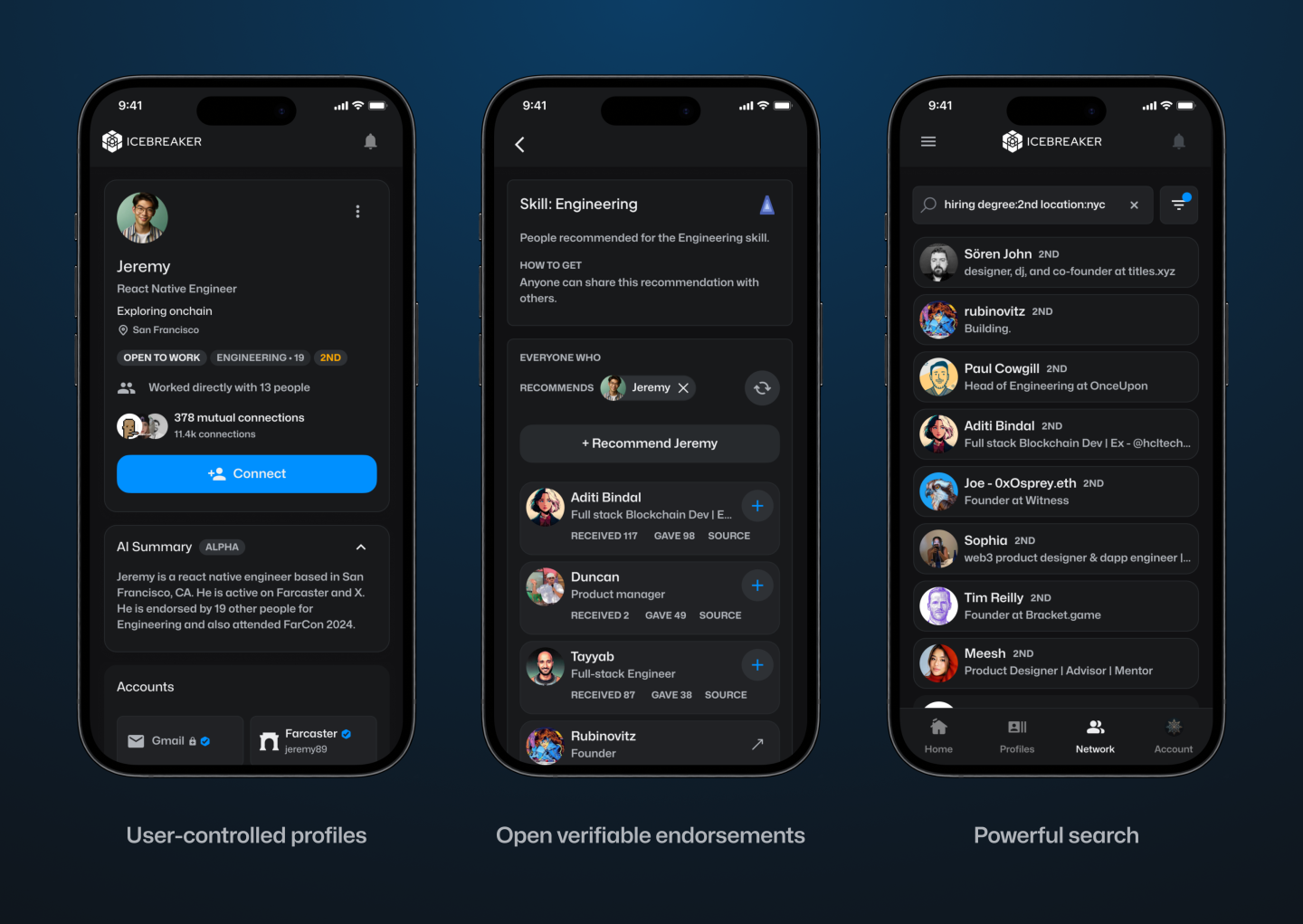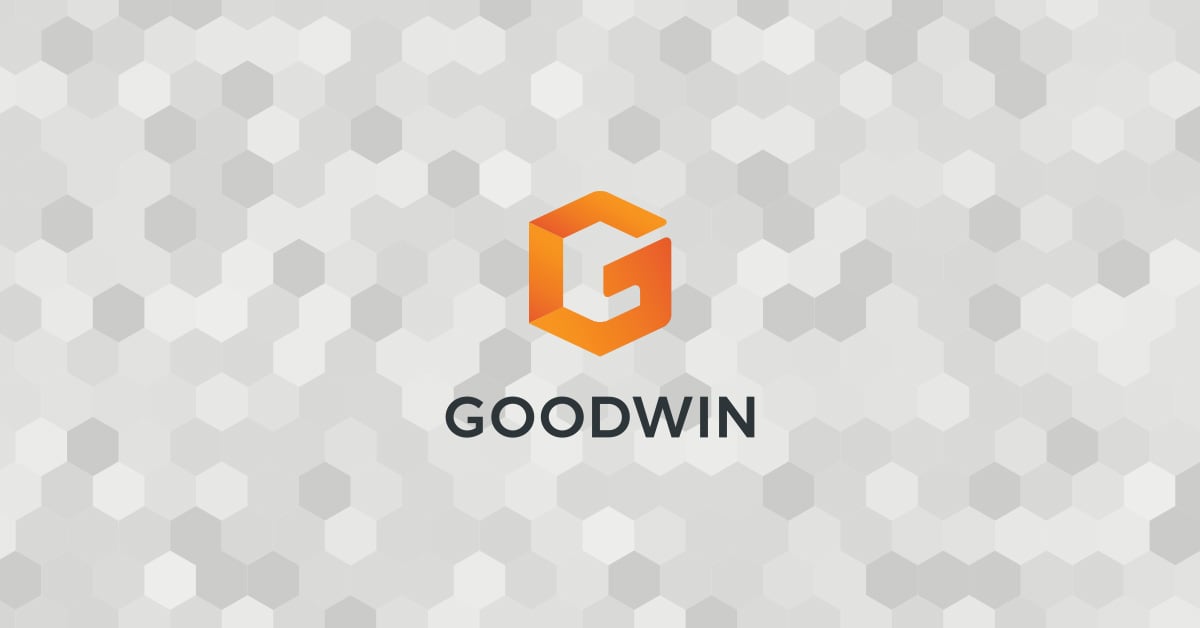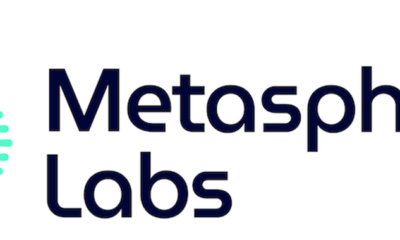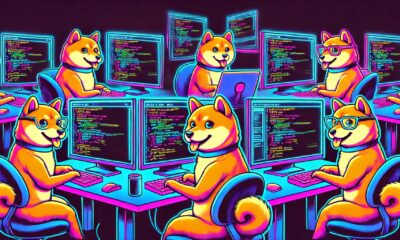News
Investing in the Blockchain Boom

Distributed ledger technology (DLT) and blockchain have made their way into business, finance, and many other industries. Their introduction to the mainstream following the rise in popularity of cryptocurrencies has created new investment vehicles, opportunities, and new sectors. Additionally, new business models using these advancements are emerging that improve workflows, data security, e-commerce, government processes, and much more.
A distributed ledger is a network of stored files in which every transaction is recorded. Blockchain was developed from the distributed ledger concept, but it enhances public use and security. Programs are used to confirm, validate, and archive information, and they can be accessed in near real-time by all participants.
In general, there are four broad areas for you to consider investing in: cryptocurrency itself, investment instruments linked to or holding cryptocurrency, non-fungible tokens, and businesses developing and implementing new products that use blockchain or distributed ledger technology.
Key Takeaways
- Many established tech companies are investing heavily in blockchain and distributed ledger technology applications.
- Cryptocurrencies are part of blockchain technology designed for transferring value; investors are also using them to store value, hedge other investments, and hold them for growth.
- Non-fungible tokens are part of the emerging metaverse design as ownership of digital assets becomes popular.
- Digital securities use blockchain to create traditional investments such as stocks and bonds.
- Web 3 is a concept of internet privacy and ownership being developed using blockchain technology.
Understanding Blockchain
Blockchain technology is similar to distributed ledger technology (DLT) but is specific to cryptocurrency and the ecosystems that have evolved from it. It uses encryption and verification methods to restrict access to append-only, where new data can be entered, but existing data can not be changed.
Blockchain use cases have exploded, with the technology making its way into everything from tokenizing pixel art to fantasy football leagues to digital worlds where you can buy virtual real estate.
Understanding Distributed Ledger Technology
DLT is used across enterprises to synchronize and share data in a ledger while verifying the accuracy of inputs and outputs. The span of industries using DLT continues to grow, encompassing supply chains, accounting, financial services, warehousing, shipping, and more.
Paramount among the benefits of DLT is its ability to reduce the costs of maintaining, securing, and verifying databases on a global scale.
The good news is that opportunities for investing in blockchain and DLT are abundant, giving you a chance to leverage the potential offered. How you choose to invest in blockchain technology will largely depend on the amount of risk you’re willing to incur and what interests you.
Companies Developing Blockchain Uses
You can invest in several companies that are researching and developing blockchain and DLT products and services. Many well-known companies are developing blockchains for business, and many more are creating them for in-house use. There are several markets you can choose from:
- Decentralized Finance
- Financial Technology
- Metaverse
- Web3
- Exchanges
Decentralized Finance
Decentralized finance (DeFi) is the concept of removing financial institutions from their role as third parties in transactions. The idea is to allow people to take control of their finances with digital wallets, peer-to-peer lending, and other financial services.
While cryptocurrency is part of DeFi, it is only the tip of the iceberg. DeFi is the all-inclusive term for all things financial that are not part of any traditional, centralized method of controlling money. Cryptocurrency, cryptocurrency exchanges, lenders, borrowers, and even insurance are part of this growing sector.
Financial Technology
Financial technology (Fintech) is the development and use of technology to improve existing financial services. The developments in blockchain technology are revolutionizing traditional services like lending, money transfers, and banking. Paypal is one of the most well-known examples of a fintech company—there are many more you can choose from to diversify your portfolio.
New blockchain uses are constantly emerging as more companies research ways to incorporate it into their industries and internal procedures.
Metaverse
The metaverse is one of the more difficult concepts to grasp that is expected to use blockchain. The metaverse is an emerging digital and ever-present world where virtual reality, augmented reality, and reality meet. The concept is to develop an immersive digital experience where a person can learn, work, play, and socialize.
Social media platforms, game developers, and technology companies are developing the hardware and software needed for this digital life experience. Meta (formerly Facebook), Advanced Microdevices (AMD), Nvidia, Amazon, and Epic Games are examples of companies that have expressed interest in metaverse products and services. Blockchain will play a large part in the metaverse as it develops.
Web 3 Companies
Web 3 companies are developing solutions that are reportedly set to change how the Internet works in the background. Blockchain technology is being used to create an infrastructure designed to restore privacy, ownership, and control to the masses.
Here are some of the emerging theories on how Web 3 will benefit everyone using blockchain technology:
- Your personal information will not be available to anyone you want because a blockchain will secure it.
- Censorship will become a thing of the past because blockchains are immutable—you won’t be able to be censored based on someone else’s beliefs or practices.
- Payments will be through cryptocurrencies, making finances anonymous, cross-border, and much cheaper for everyone.
- It is ownership-centric, meaning your digital content cannot be taken away, changed, or modified by others.
Exchanges
You can trade or invest in cryptocurrencies by setting up an account on a cryptocurrency exchange. Price movements create opportunities for profits through day trading or buying and selling cryptocurrencies.
These exchanges are also businesses—Coinbase (COIN) is a publicly traded company with stocks listed on the Nasdaq exchange that can expose you to blockchain without requiring you to invest directly in cryptocurrency.
Digital Securities
Blockchain has enabled the decentralization and tokenization of nearly anything that has value. For example, a company that wants to raise money can create digital investment instruments using a blockchain, similar to how non-fungible tokens are created. Tokenization, in this respect, is the transfer of ownership or interest to a token, which is the digital representation of that ownership linked to the blockchain.
Digital securities trading may not be regulated or available where you live, so ensure you check with your country’s authorities before attempting it.
Digital securities use smart contracts—programs that execute exchanges or trades as soon as both parties agree to it. This creates a safety net for traders and investors who want to buy or sell securities directly with another party rather than through a transaction facilitator like a broker.
The digital securities market continues to evolve, but you can find them emerging in sectors such as:
- Venture capital
- Real estate
- Private equity
- Hedge funds
The main benefit of digital securities is that they can be fractionalized to a much greater degree than is practical with traditional securities. In addition, this fractionalization offers exposure to markets that you may not have previously been able to access due to the amount of capital needed to gain entry.
Non-Fungible Tokens
Non-fungible tokens (NFTs) are digital assets that are tokenized. They existed before 2021, but media attention that year popularized them in the mainstream after the digital artist Beeple sold a collage of non-fungible tokens for $69 million. An NFT can be any digital asset—clothing, art, music, movies, video games, or anything else that can be tokenized.
Emerging and Future Developments
Following Bitcoin’s release, the products that have emerged using blockchains have been at the center of most people’s interest. There isn’t much left to tokenize that hasn’t already been attempted, and new cryptocurrencies do not gain much attention because they are just more of what is already available. Decentralized applications and decentralized financial services are more common.
Blockchain developers continue to work on scaling issues, transaction throughput, centralization concerns, and more—with new blockchains emerging all the time. But similar to the cryptocurrencies created using blockchains, more blockchains are just more of the same.
Web 3 development is underway, but whether it will gain traction is unclear. There is still a long road ahead and developers face many challenges—primarily convincing those who have monetized the web’s infrastructure to release their interests in favor of allowing the dream of decentralization to be realized.
Blockchain development, as the average person understands it (the underlying technology behind cryptocurrencies, decentralized applications, technology behind Web 3) is expected to continue growing, but it’s possible that it will slow in favor of newer technology.
If the Blockchain Boom Stalls, What’s Next?
Blockchain brought about the realization that data and information can be immutable and accurate. Next came developments in artificial intelligence, which progressed as rapidly as blockchain did after Bitcoin was popularized.
Latest developments point to a merger of three technologies—immutable and accurate data, smart contracts, and artificial intelligence. The theory is that, eventually, this merger will bring authenticity to data, augment businesses with vast amounts of internal and external data, automate many costly processes, and reduce the time needed in decision-making by providing accurate and data-backed recommendations.
For businesses, this translates into reduced costs and streamlined operations. For investors, it means companies that invest in incorporating blockchain and AI solutions are likely to be more accurate in reporting, more profitable, and more trustworthy.
To remain competitive, businesses are going to need blockchains backing them because they create trust and can automate many processes. Artificial intelligence can analyze vast amounts of data and facilitate decision-making or even initiate smart contract execution, speeding up processes tremendously.
Small businesses won’t be able to keep up, so they will need to determine if they could benefit from blockchain+AI-as-a-service solutions, another emerging service.
Quite possibly, the next iteration of blockchain development will be an industry that combines all blockchain and AI developments. This industry is expected by some to grow exponentially in the near future.
Is the Blockchain Market Growing?
The blockchain market has continued to grow since it first became mainstream. It is expected to continue growing, but there are many exciting developments that could diminish or overshadow its rate of growth.
Is Blockchain the Future or Just a Fad?
Blockchain, as it has been known since 2009, was a starting point for future developments, much like any new technology. As it ages, more blockchain uses are being discovered and developed, so it is unlikely that it will fade into oblivion.
Does Blockchain Have Any Future?
Blockchain started a revolution in the way data was stored, accessed, verified, and secured. If developments to combine it with AI and other technologies are an indicator, blockchain will change but not disappear, much like computers changed from room-sized calculators to the small, multi-tasking, multi-use, connected, and fast devices we use now.
The Bottom Line
Blockchain is the technology behind cryptocurrency and is where most development and research are focused. It is becoming more popular as more use cases are conceived and people learn more about it.
In the future, cryptocurrencies might still exist, but blockchain is most likely to be the invention that induces the most change and stays around.
The comments, opinions, and analyses expressed on Investopedia are for informational purposes only. Read our warranty and liability disclaimer for more info. As of the date this article was written, the author does not own cryptocurrency.
News
Terra Can’t Catch a Break as Blockchain Gets $6 Million Exploited

The attack, which exploited a vulnerability disclosed in April, drained around 60 million ASTRO tokens, sending the price plummeting.
The Terra blockchain has been exploited for over $6 million, forcing developers to take a momentary break the chain.
Beosin Cyber Security Company reported that the protocol lost 60 million ASTRO tokens, 3.5 million USDC, 500,000 USDT, and 2.7 BTC or $180,000.
Terra developers paused the chain on Wednesday morning to apply an emergency patch that would address the attack. Moments later, a 67% majority of validators upgraded their nodes and resumed block production.
The ASTRO token has plunged as much as 75%. It is now trading at $0.03, a 25% decline on the day. Traders who took advantage of the drop are now on 195%.
The vulnerability that took down the Cosmos-based blockchain was disclosed in April and involved the deployment of a malicious CosmWasm contract. It opened the door to attacks via what is called an “ibc-hooks callback timeout reentrancy vulnerability,” which is used to invoke contracts and enable cross-chain swaps.
Terra 2.0 also suffered a massive drop in total value locked (TVL) in April, shortly after the vulnerability was discovered. It plunged 80% to $6 million from $30 million in TVL and has since lost nearly half of that value, currently sitting at $3.9 million.
The current Earth chain emerged from the rubble as a hard fork after the original blockchain, now called Terra Classic, collapsed in 2022. Terra collapsed after its algorithmic stablecoin (UST) lost its peg, causing a run on deposits. More than $50 billion of UST’s market cap was wiped out in a matter of days.
Terraform Labs, the company behind the blockchain, has been slowly unravelling its legal woes since its mid-2022 crash. Founder Do Kwon awaits sentencing in Montenegro after he and his company were found liable for $40 billion in customer funds in early April.
On June 12, Terraform Labs settled with the SEC for $4.4 billion, for which the company will pay about $3.59 billion plus interest and a $420 million penalty. Meanwhile, Kwon will pay $204.3 million, including $110 million in restitution, interest and an $80 million penalty, a court filing showed.
News
Google and Coinbase Veterans Raise $5M to Build Icebreaker, Blockchain’s Answer to LinkedIn

Icebreaker: Think LinkedIn but on a Blockchain—announced Wednesday that it has secured $5 million in seed funding. CoinFund led the round, with participation from Accomplice, Anagram, and Legion Capital, among others.
The company, which is valued at $21 million, aims to become the world’s first open-source network for professional connections. Its co-founders, Dan Stone and Jack Dillé, come from Google AND Monetary base; Stone was a product manager at the cryptocurrency giant and also the co-creator of Google’s largest multi-identity measurement and marketing platform, while Dillé was a design manager for Google Working area.

The pair founded Icebreaker on the shared belief that the imprint of one’s digital identity (and reputation) should not be owned by a single entity, but rather publicly owned and accessible to all. Frustrated that platforms like LinkedIn To limit how we leverage our connections, Dillé told Fortune he hopes to remove paywalls and credits, which “force us to pay just to browse our network.” Using blockchain technology, Icebreaker lets users transfer their existing professional profile and network into a single, verified channel.
“Imagine clicking the login button and then seeing your entire network on LinkedIn, ChirpingFarcaster and email? Imagine how many introductions could be routed more effectively if you could see the full picture of how you’re connected to someone,” Stone told Fortune.
Users can instantly prove their credentials and provide verifiable endorsements for people in their network. The idea is to create an “open graph of reputation and identity,” according to the founders. They hope to challenge LinkedIn’s closed network that “secures data,” freeing users to search for candidates and opportunities wherever they are online. By building on-chain, the founders note, they will create a public ledger of shared context and trust.
Verified channels are now launched for
Chirping
Online Guide
Wallet
Discord
Telephone
TeleporterYou can find them in Account -> Linked Accounts Italian: https://t.co/mRDyuWW8O2
— Icebreaker (@icebreaker_xyz) April 3, 2024
“Digital networking is increasingly saturated with noise and AI-driven fake personas,” the founders said in a statement. For example: Dillé’s LinkedIn headline reads “CEO of Google,” a small piece of digital performance art to draw attention to unverifiable information on Web2 social networks that can leave both candidates and recruiters vulnerable to false claims.
“Icebreaker was created to enable professionals to seamlessly tap into their existing profiles and networks to surface exceptional people and opportunities, using recent advances in cryptographically verifiable identity,” the company said, adding that the new funding will go towards expanding its team and developing products.
“One of the next significant use cases for cryptocurrency is the development of fundamental social graphs for applications to leverage… We are proud to support Dan, Jack and their team in their mission to bring true professional identity ownership to everyone online,” said CoinFund CIO Alex Felix in a statement.
Learn more about all things cryptocurrency with short, easy-to-read flashcards. Click here to Fortune’s Crash Course in Cryptocurrency.
Fuente
News
Luxembourg proposes updates to blockchain laws | Insights and resources

On July 24, 2024, the Ministry of Finance proposed Blockchain Bill IVwhich will provide greater flexibility and legal certainty for issuers using Distributed Ledger Technology (DLT). The bill will update three of Luxembourg’s financial laws, the Law of 6 April 2013 on dematerialised securitiesTHE Law of 5 April 1993 on the financial sector and the Law of 23 December 1998 establishing a financial sector supervisory commissionThis bill includes the additional option of a supervisory agent role and the inclusion of equity securities in dematerialized form.
DLT and Luxembourg
DLT is increasingly used in the financial and fund management sector in Luxembourg, offering numerous benefits and transforming various aspects of the industry.
Here are some examples:
- Digital Bonds: Luxembourg has seen multiple digital bond issuances via DLT. For example, the European Investment Bank has issued bonds that are registered, transferred and stored via DLT processes. These bonds are governed by Luxembourg law and registered on proprietary DLT platforms.
- Fund Administration: DLT can streamline fund administration processes, offering new opportunities and efficiencies for intermediaries, and can do the following:
- Automate capital calls and distributions using smart contracts,
- Simplify audits and ensure reporting accuracy through transparent and immutable transaction records.
- Warranty Management: Luxembourg-based DLT platforms allow clients to swap ownership of baskets of securities between different collateral pools at precise times.
- Tokenization: DLT is used to tokenize various assets, including real estate and luxury goods, by representing them in a tokenized and fractionalized format on the blockchain. This process can improve the liquidity and accessibility of traditionally illiquid assets.
- Tokenization of investment funds: DLT is being explored for the tokenization of investment funds, which can streamline the supply chain, reduce costs, and enable faster transactions. DLT can automate various elements of the supply chain, reducing the need for reconciliations between entities such as custodians, administrators, and investment managers.
- Issuance, settlement and payment platforms:Market participants are developing trusted networks using DLT technology to serve as a single source of shared truth among participants in financial instrument investment ecosystems.
- Legal framework: Luxembourg has adapted its legal framework to accommodate DLT, recognising the validity and enforceability of DLT-based financial instruments. This includes the following:
- Allow the use of DLT for the issuance of dematerialized securities,
- Recognize DLT for the circulation of securities,
- Enabling financial collateral arrangements on DLT financial instruments.
- Regulatory compliance: DLT can improve transparency in fund share ownership and regulatory compliance, providing fund managers with new opportunities for liquidity management and operational efficiency.
- Financial inclusion: By leveraging DLT, Luxembourg aims to promote greater financial inclusion and participation, potentially creating a more diverse and resilient financial system.
- Governance and ethics:The implementation of DLT can promote higher standards of governance and ethics, contributing to a more sustainable and responsible financial sector.
Luxembourg’s approach to DLT in finance and fund management is characterised by a principle of technology neutrality, recognising that innovative processes and technologies can contribute to improving financial services. This is exemplified by its commitment to creating a compatible legal and regulatory framework.
Short story
Luxembourg has already enacted three major blockchain-related laws, often referred to as Blockchain I, II and III.
Blockchain Law I (2019): This law, passed on March 1, 2019, was one of the first in the EU to recognize blockchain as equivalent to traditional transactions. It allowed the use of DLT for account registration, transfer, and materialization of securities.
Blockchain Law II (2021): Enacted on 22 January 2021, this law strengthened the Luxembourg legal framework on dematerialised securities. It recognised the possibility of using secure electronic registration mechanisms to issue such securities and expanded access for all credit institutions and investment firms.
Blockchain Act III (2023): Also known as Bill 8055, this is the most recent law in the blockchain field and was passed on March 14, 2023. This law has integrated the Luxembourg DLT framework in the following way:
- Update of the Act of 5 August 2005 on provisions relating to financial collateral to enable the use of electronic DLT as collateral on financial instruments registered in securities accounts,
- Implementation of EU Regulation 2022/858 on a pilot scheme for DLT-based market infrastructures (DLT Pilot Regulation),
- Redefining the notion of financial instruments in Law of 5 April 1993 on the financial sector and the Law of 30 May 2018 on financial instruments markets to align with the corresponding European regulations, including MiFID.
The Blockchain III Act strengthened the collateral rules for digital assets and aimed to increase legal certainty by allowing securities accounts on DLT to be pledged, while maintaining the efficient system of the 2005 Act on Financial Collateral Arrangements.
With the Blockchain IV bill, Luxembourg will build on the foundations laid by previous Blockchain laws and aims to consolidate Luxembourg’s position as a leading hub for financial innovation in Europe.
Blockchain Bill IV
The key provisions of the Blockchain IV bill include the following:
- Expanded scope: The bill expands the Luxembourg DLT legal framework to include equity securities in addition to debt securities. This expansion will allow the fund industry and transfer agents to use DLT to manage registers of shares and units, as well as to process fund shares.
- New role of the control agent: The bill introduces the role of a control agent as an alternative to the central account custodian for the issuance of dematerialised securities via DLT. This control agent can be an EU investment firm or a credit institution chosen by the issuer. This new role does not replace the current central account custodian, but, like all other roles, it must be notified to the Commission de Surveillance du Secteur Financier (CSSF), which is designated as the competent supervisory authority. The notification must be submitted two months after the control agent starts its activities.
- Responsibilities of the control agent: The control agent will manage the securities issuance account, verify the consistency between the securities issued and those registered on the DLT network, and supervise the chain of custody of the securities at the account holder and investor level.
- Simplified payment processesThe bill allows issuers to meet payment obligations under securities (such as interest, dividends or repayments) as soon as they have paid the relevant amounts to the paying agent, settlement agent or central account custodian.
- Simplified issuance and reconciliationThe bill simplifies the process of issuing, holding and reconciling dematerialized securities through DLT, eliminating the need for a central custodian to have a second level of custody and allowing securities to be credited directly to the accounts of investors or their delegates.
- Smart Contract Integration:The new processes can be executed using smart contracts with the assistance of the control agent, potentially increasing efficiency and reducing intermediation.
These changes are expected to bring several benefits to the Luxembourg financial sector, including:
- Fund Operations: Greater efficiency and reduced costs by leveraging DLT for the issuance and transfer of fund shares.
- Financial transactions: Greater transparency and security.
- Transparency of the regulatory environment: Increased attractiveness and competitiveness of the Luxembourg financial centre through greater legal clarity and flexibility for issuers and investors using DLT.
- Smart Contracts: Potential for automation of contractual terms, reduction of intermediaries and improvement of transaction traceability through smart contracts.
Blockchain Bill IV is part of Luxembourg’s ongoing strategy to develop a strong digital ecosystem as part of its economy and maintain its status as a leading hub for financial innovation. Luxembourg is positioning itself at the forefront of Europe’s growing digital financial landscape by constantly updating its regulatory framework.
Local regulations, such as Luxembourg law, complement European regulations by providing a more specific legal framework, adapted to local specificities. These local laws, together with European initiatives, aim to improve both the use and the security of projects involving new technologies. They help establish clear standards and promote consumer trust, while promoting innovation and ensuring better protection against potential risks associated with these emerging technologies. Check out our latest posts on these topics and, for more information on this law, blockchain technology and the tokenization mechanism, do not hesitate to contact us.
We are available to discuss any project related to digital finance, cryptocurrencies and disruptive technologies.
This informational piece, which may be considered advertising under the ethics rules of some jurisdictions, is provided with the understanding that it does not constitute the rendering of legal or other professional advice by Goodwin or its attorneys. Past results do not guarantee a similar outcome.
News
New bill pushes Department of Veterans Affairs to examine how blockchain can improve its work

The Department of Veterans Affairs would have to evaluate how blockchain technology could be used to improve benefits and services offered to veterans, according to a legislative proposal introduced Tuesday.
The bill, sponsored by Rep. Nancy Mace, R-S.C., would direct the VA to “conduct a comprehensive study of the feasibility, potential benefits, and risks associated with using distributed ledger technology in various programs and services.”
Distributed ledger technology, including blockchain, is used to protect and track information by storing data across multiple computers and keeping a record of its use.
According to the text of the legislation, which Mace’s office shared exclusively with Nextgov/FCW ahead of its publication, blockchain “could significantly improve benefits allocation, insurance program management, and recordkeeping within the Department of Veterans Affairs.”
“We need to bring the federal government into the 21st century,” Mace said in a statement. “This bill will open the door to research on improving outdated systems that fail our veterans because we owe it to them to use every tool at our disposal to improve their lives.”
Within one year of the law taking effect, the Department of Veterans Affairs will be required to submit a report to the House and Senate Veterans Affairs committees detailing its findings, as well as the benefits and risks identified in using the technology.
The mandatory review is expected to include information on how the department’s use of blockchain could improve the way benefits decisions are administered, improve the management and security of veterans’ personal data, streamline the insurance claims process, and “increase transparency and accountability in service delivery.”
The Department of Veterans Affairs has been studying the potential benefits of using distributed ledger technology, with the department emission a request for information in November 2021 seeking input from contractors on how blockchain could be leveraged, in part, to streamline its supply chains and “secure data sharing between institutions.”
The VA’s National Institute of Artificial Intelligence has also valued the use of blockchain, with three of the use cases tested during the 2021 AI tech sprint focused on examining its capabilities.
Mace previously introduced a May bill that would direct Customs and Border Protection to create a public blockchain platform to store and share data collected at U.S. borders.
Lawmakers also proposed additional measures that would push the Department of Veterans Affairs to consider adopting other modernized technologies to improve veteran services.
Rep. David Valadao, R-Calif., introduced legislation in June that would have directed the department to report to lawmakers on how it plans to expand the use of “certain automation tools” to process veterans’ claims. The House of Representatives Subcommittee on Disability Assistance and Memorial Affairs gave a favorable hearing on the congressman’s bill during a Markup of July 23.
-

 Videos10 months ago
Videos10 months agoCrypto News: Bitcoin, ETH Price, CPI Print, PYTH, WIF & MORE!!
-

 Videos9 months ago
Videos9 months agoCrypto News: Bitcoin Price, ETF, ETH, WIF, HNT & MORE!!
-

 DeFi9 months ago
DeFi9 months agoMetasphere Labs announces follow-up event regarding
-

 Videos10 months ago
Videos10 months agoSolana price potential?! Check out THIS update if you own SOL!!
-

 Videos9 months ago
Videos9 months agoWho Really CONTROLS THE MARKETS!! Her plans REVEALED!!
-

 DeFi6 months ago
DeFi6 months agoPump.Fun Overtakes Ethereum in Daily Revenue: A New Leader in DeFi
-

 DeFi6 months ago
DeFi6 months agoDegens Can Now Create Memecoins From Tweets
-

 News6 months ago
News6 months agoNew bill pushes Department of Veterans Affairs to examine how blockchain can improve its work
-

 News6 months ago
News6 months agoLawmakers, regulators to study impact of blockchain and cryptocurrency in Alabama • Alabama Reflector
-

 Bitcoin6 months ago
Bitcoin6 months ago1 Top Cryptocurrency That Could Surge Over 4,300%, According to This Wall Street Firm
-

 Ethereum9 months ago
Ethereum9 months agoComment deux frères auraient dérobé 25 millions de dollars lors d’un braquage d’Ethereum de 12 secondes • The Register
-

 Videos9 months ago
Videos9 months agoCryptocurrency News: BTC Rally, ETH, SOL, FTM, USDT Recover & MORE!

 ASTRO Price
ASTRO Price



